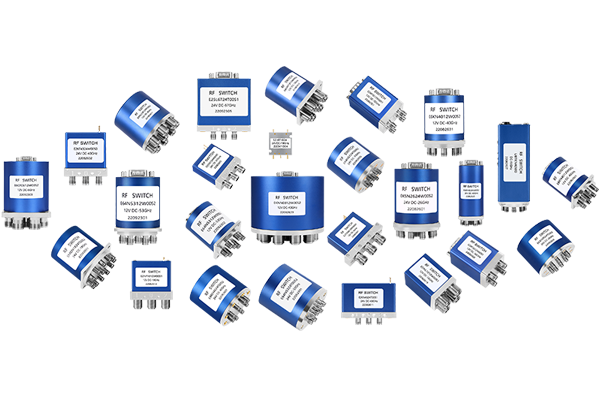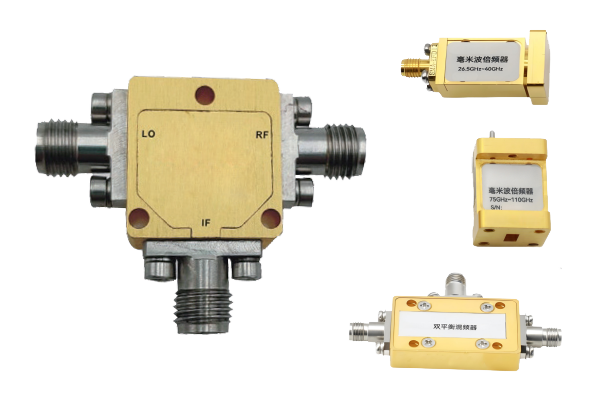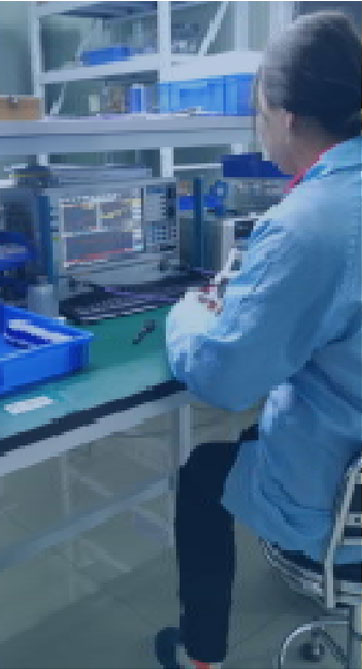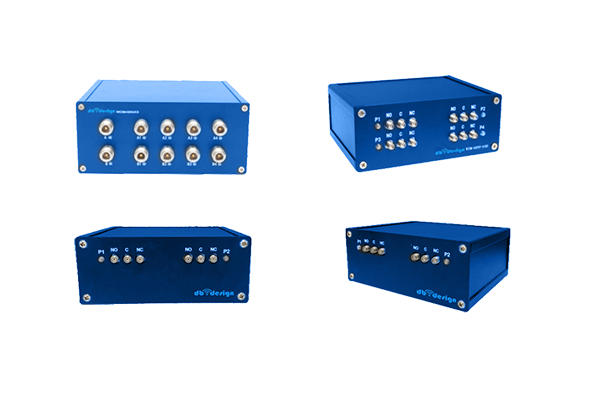
Pin diodes now serve as significant elements in high-bandwidth applications owing to their fundamental material and electrical qualities Their fast toggling behavior plus small capacitance and reduced insertion loss renders them apt for use in switch modulator and attenuator circuits. The operative principle for PIN diode switching centers on bias-controlled current modulation. The control voltage varies the depletion region dimensions at the junction and thereby alters conductive behavior. Varying the bias voltage facilitates reliable high-frequency switching of PIN diodes with small distortion penalties
In designs requiring accurate timing control PIN diodes are integrated into refined circuit architectures They operate within RF filter topologies to control the passing or blocking of chosen frequency bands. Their competency in managing strong signals qualifies them for amplifier power splitter and signal source applications. Miniaturization and improved efficiency of PIN diodes have extended their usefulness across wireless systems and radar platforms
Evaluating Coaxial Switch Design and Functionality
Coaxial switch engineering is a complex undertaking requiring careful attention to multiple interacting factors Key factors such as switch category operating band and insertion loss shape the coaxial switch performance. An efficient coaxial switch should reduce insertion loss while optimizing isolation between ports
To analyze performance one must evaluate metrics such as return loss insertion loss and isolation. These values come from combined use of simulations theoretical predictions and experimental validation. Detailed and accurate analysis underpins reliable functioning of coaxial switches in various systems
- Simulation, analytical modeling and experimental testing are widely utilized to examine coaxial switch designs
- Environmental temperature impedance mismatches and production tolerances can significantly influence switch characteristics
- Emerging developments and novel techniques in switch design concentrate on boosting performance while minimizing footprint and energy use
Optimizing LNA Designs for Performance
Enhancing the performance efficiency and gain of a Low Noise Amplifier is vital for preserving signal integrity in many systems Successful optimization depends on proper transistor selection correct biasing and appropriate circuit topology. High quality LNA layouts suppress noise sources and deliver amplified signals with limited distortion. Modeling simulation and analysis tools play a central role in evaluating the impact of design decisions on noise. Reducing the Noise Figure remains the design target to ensure strong signal retention with minimal added noise
- Selecting low-noise active devices is central to achieving low overall noise
- Implementing suitable and optimal bias conditions helps minimize transistor noise
- Circuit topology significantly influences overall noise performance
Implementing matching networks noise reduction strategies and feedback control enhances LNA outcomes
RF Routing Strategies with PIN Diode Switches

Pin diode switch implementations yield flexible efficient routing of RF signals in diverse applications Rapid switching capability of these semiconductors supports dynamic path selection and control. Strong isolation and low insertion loss in PIN diodes contribute to reduced signal degradation. PIN diodes are used in antenna switch matrices duplexers and phased array RF systems
Switching depends on bias-induced resistance changes within the diode to route signals. As deactivated the diode provides high resistance, impeding RF signal transmission. Applying a forward control voltage lowers the diode’s resistance enabling signal transmission
- Additionally PIN diode switches present fast switching low energy use and compact dimensions
Various PIN diode network configurations and architectural designs can achieve advanced signal routing functions. Strategic interconnection of many switches yields configurable switching matrices for versatile path routing
Measuring the Performance of Coaxial Microwave Switches

Detailed assessment and testing validate coaxial microwave switches for optimal function across electronic systems. Multiple determinants including insertion reflection transmission loss isolation switching speed and operating bandwidth shape performance. A full evaluation process measures these characteristics under various operating environmental and test conditions
- Furthermore moreover additionally the evaluation should consider reliability robustness and durability plus the ability to tolerate harsh environmental stresses
- Ultimately comprehensive evaluation outputs provide critical valuable and essential guidance for switch selection design and optimization for targeted uses
Comprehensive Survey on Minimizing LNA Noise
LNAs are indispensable in wireless RF communication systems because they raise weak signals while suppressing noise. This review presents a thorough examination analysis and overview of noise mitigation strategies for LNAs. We analyze investigate and discuss main noise origins such as thermal shot and flicker noise. We additionally survey noise matching feedback circuit methods and optimal biasing approaches to reduce noise. The article highlights recent advances such as novel semiconductor materials and innovative circuit architectures that reduce noise figure. By providing insight into noise minimization principles and practices the review supports researchers and engineers working on high performance RF systems
High Speed Switching Roles of PIN Diodes

PIN diodes display exceptional unique and remarkable characteristics making them suitable for high speed switching Reduced capacitance and low resistance yield fast switching performance suitable for strict timing control. Their proportional voltage response enables controlled amplitude modulation and reliable switching behavior. Their adaptability flexibility and versatility qualifies them as suitable applicable and appropriate for broad high speed uses They are applied in optical communications microwave systems and signal processing equipment and devices
Integrated Coaxial Switch and Circuit Switching Solutions
Integrated circuit coaxial switching technology brings enhanced capabilities for signal routing processing and handling within electronics systems circuits and devices. These specialized integrated circuits enable control management and routing of coaxial signals with high frequency performance and low latency insertion times. IC miniaturization supports compact efficient reliable and robust designs appropriate for dense interfacing integration and connectivity contexts
- By carefully meticulously and rigorously applying these approaches designers can realize LNAs with outstanding noise performance enabling sensitive reliable electronic systems With careful meticulous and rigorous deployment of these approaches developers can accomplish LNAs with outstanding noise performance enabling trustworthy sensitive electronics Through careful meticulous and rigorous application of such methods engineers can design LNAs with top tier noise performance enabling dependable sensitive systems With careful meticulous and coaxial switch rigorous execution of these strategies designers can obtain LNAs exhibiting excellent noise performance for sensitive reliable systems
- Application fields encompass telecommunications data communications and wireless networking
- Aerospace defense and industrial automation represent important application areas
- These technologies appear in consumer electronics A V gear and test and measurement setups
mmWave LNA Design Considerations and Tradeoffs

LNA design at millimeter wave frequencies faces special challenges due to higher signal attenuation and amplified noise impacts. Parasitic capacitance and inductance play a dominant role at mmWave and necessitate precise layout and component choices. Reducing input mismatch and boosting power gain are critical essential and important for LNA functionality at mmWave. Selecting active devices like HEMTs GaAs MESFETs and InP HBTs greatly affects achievable noise figures at these frequencies. Moreover additionally moreover the design implementation and optimization of matching networks is vital to ensure efficient power transfer and impedance match. Attention to package parasitics is crucial as they have potential to harm mmWave LNA performance. Choosing low-loss interconnects and sound ground plane designs is essential necessary and important to minimize reflections and maintain high bandwidth
Characterization and Modeling of PIN Diodes for RF Switching
PIN diodes operate as essential components elements and parts in diverse RF switching applications. Precise accurate and detailed characterization of such devices is essential for designing developing and optimizing reliable high performance circuits. This requires analyzing evaluating and examining electrical properties including voltage current resistance impedance and conductance. Frequency response bandwidth tuning capabilities and switching speed latency or response time are also characterized
Moreover furthermore additionally building accurate models simulations and representations for PIN diodes is essential crucial and vital to predict their RF system behavior. Various numerous modeling approaches including lumped element distributed element and SPICE models are applicable. Which model simulation or representation to use depends on the particular application requirements and the expected required desired accuracy
State of the Art Techniques for Low Noise Amplifier Design
LNA engineering calls for careful topology and component selection to meet stringent noise performance goals. New and emerging semiconductor advances have led to innovative groundbreaking sophisticated design techniques that lower noise substantially.
These techniques often involve employing utilizing and implementing wideband matching networks adopting low-noise high intrinsic gain transistors and optimizing biasing schemes strategies or approaches. Further advanced packaging approaches together with thermal management methods play a vital role in minimizing external noise contributions. Through careful meticulous and rigorous implementation of these approaches engineers can achieve LNAs with exceptional noise performance supporting sensitive reliable systems
